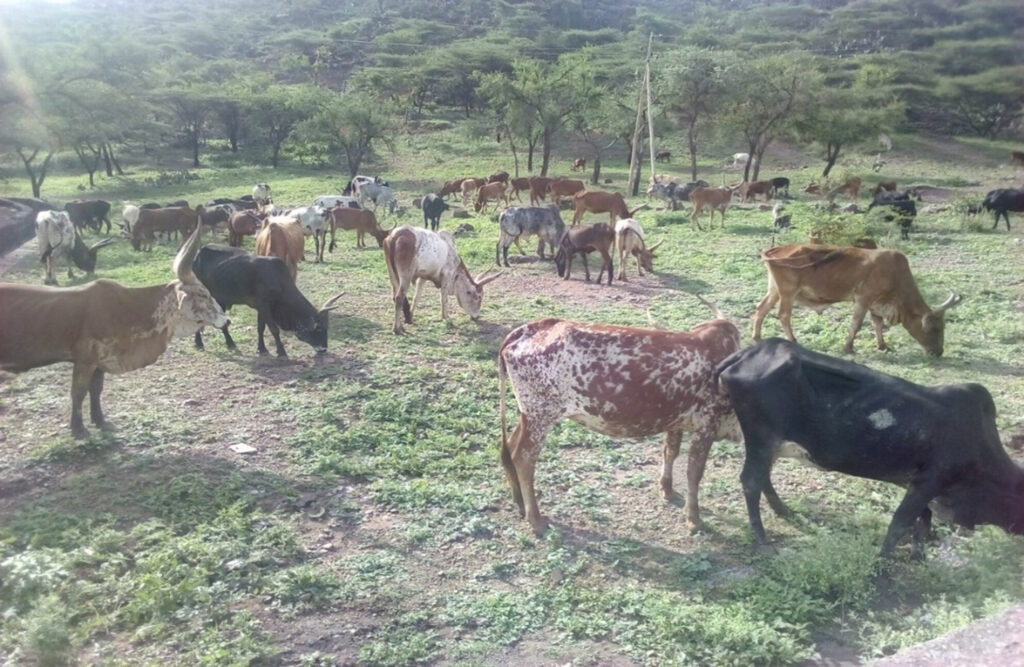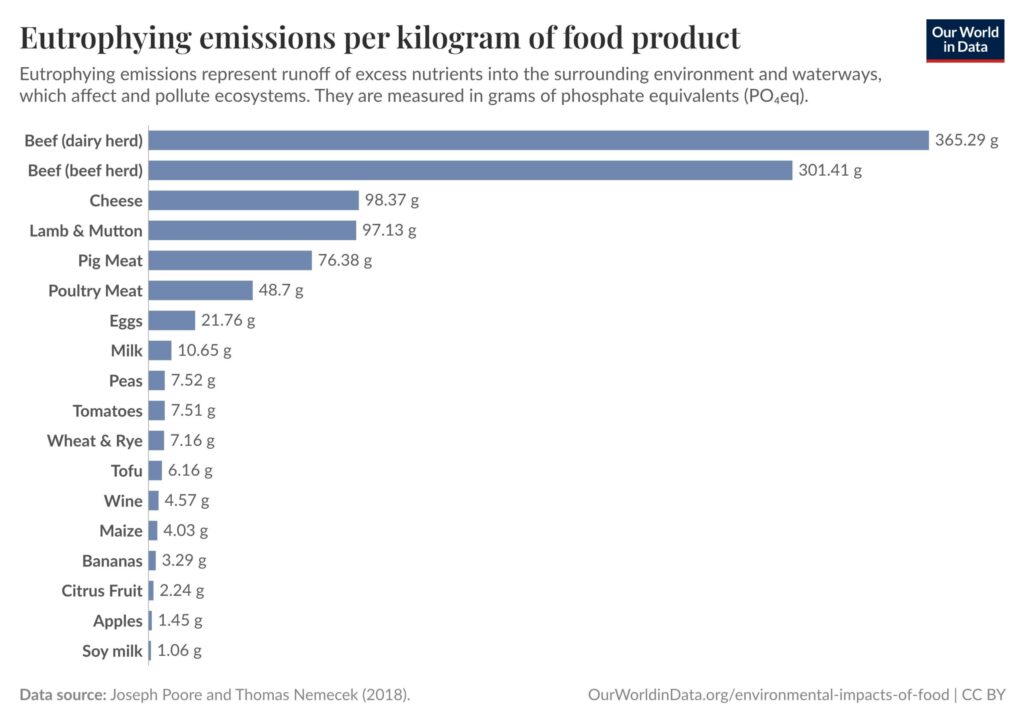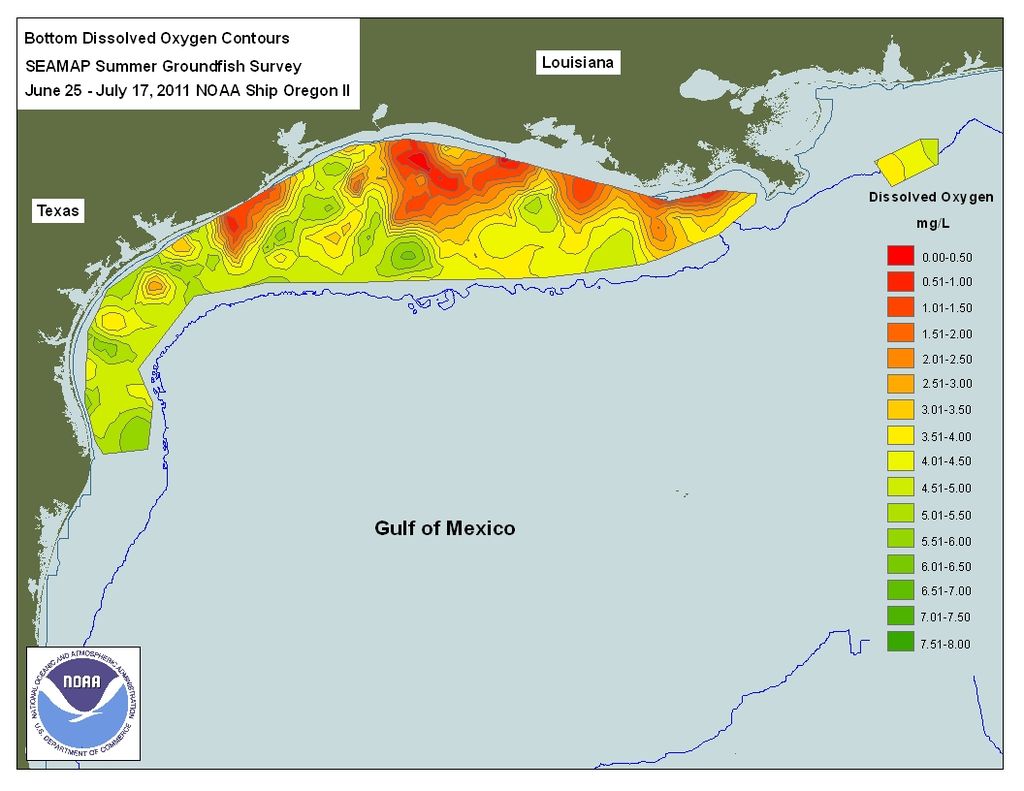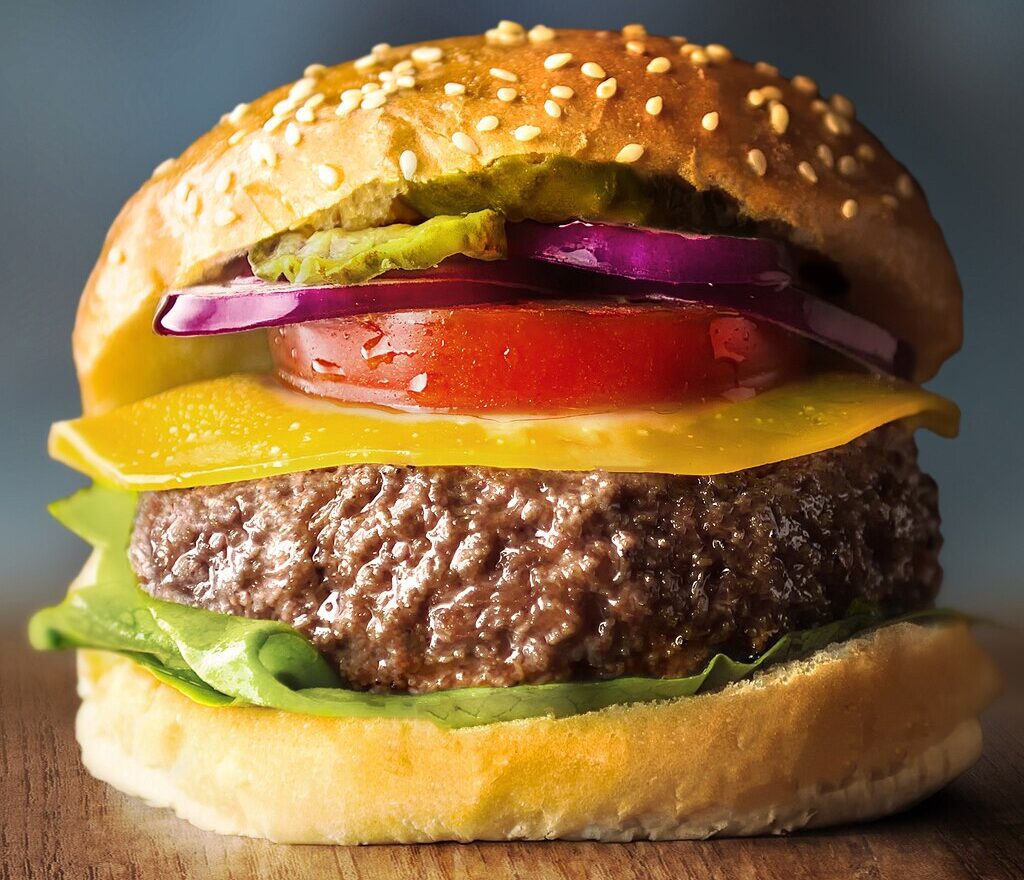Introduction
Climate change, deforestation, and species extinctions often seem like vast, distant forces. But our food choices, particularly when they include animals, directly drive these global challenges. The environmental impact of meat touches nearly every part of the planet, from the climate to forests, rivers, and wildlife.
Food production is responsible for roughly a third of all human-made greenhouse gas emissions, uses 70% of our freshwater, and is a major driver of habitat loss (Nature). And among our food choices, meat stands out for its outsized ecological footprint. Growing evidence from recent scientific studies underscores that avoiding meat consumption can significantly reduce our impact on the planet.
I previously wrote about the ecological costs of industrial farming. In this article, I critically examine the environmental impact of meat—from greenhouse gases to deforestation, water use, pollution, and biodiversity loss—using the latest data. The goal is not sensationalism, but a clear-eyed look at the evidence. By the end, the case for cutting back on burgers and steaks becomes hard to ignore, purely on environmental grounds.
Greenhouse Gas Emissions: The Environmental Impact of Meat on Climate
How Much Does Meat Contribute to Global Warming?
One of the most compelling reasons to avoid meat is its contribution to climate change. Rearing livestock generates enormous amounts of greenhouse gases (GHGs) like carbon dioxide, methane, and nitrous oxide. How big is the impact? Estimates vary, but recent analyses put animal agriculture at roughly 11% to 17% of global GHG emissions the breakthrough.org. Moreover, depending on accounting methods (for example, how land-use changes are included), some studies even argue it could be as high as ~20% thebreakthrough.org.
The production of just one kilogram of beef emits about 99 kilograms of CO₂-equivalent gases. Pork and chicken emit around 10-12 kg CO₂e per kilogram. In contrast, plant-based foods, such as root, emit only around 0.43 kg CO₂e per kilogram ourworldindata.org. Thus, beef’s climate impact can be up to 230 times greater than many plant-based alternatives—and a key driver of the environmental impact of meat overall.
Major Sources of Livestock Emissions
Most livestock emissions stem from methane produced during digestion, known as enteric fermentation—essentially cow burps. Methane traps significantly more heat than carbon dioxide (CO₂), greatly amplifying cattle’s climate impact. Additionally, manure storage releases methane and nitrous oxide, another powerful GHG about 265 times stronger than CO₂ (IPCC).
Growing livestock feed further increases emissions. Fertilizer production for feed crops is energy-intensive and emits CO₂. Applying fertilizer to fields releases nitrous oxide. Land-use changes—particularly deforestation to create grazing pastures or grow feed crops—also release large amounts of carbon stored in trees and soils. These practices all feed into the environmental impact of meat, multiplying its effect across the entire food system.

Why the Environmental Impact of Meat Will Likely Grow
Meat’s climate burden is set to rise sharply. As populations and incomes grow, global demand for meat continues to climb. If current trends hold, consumption of beef and other ruminant meats could surge by around 90% by 2050 nature.com. If we follow this path, scientists project that emissions from the global food system alone would likely push warming beyond 1.5 °C, even if we cut fossil fuel emissions from other sectors thebreakthrough.org.
In fact, recent research indicates that more than half of future warming associated with food production would come from meat and dairy (largely from cattle). Emissions from meat production alone are projected to contribute about 0.2–0.44 °C of global warming by the end of the century thebreakthrough.org. To put that in perspective, that’s a significant chunk of our remaining “carbon budget” being consumed by burgers and steaks. The environmental impact of meat could soon outpace our progress in other areas unless we act.
On the bright side, methane breaks down relatively quickly in the atmosphere—within about a decade. This short lifespan means reducing meat consumption now can quickly decrease atmospheric methane levels. In practical terms, dietary changes made today could noticeably slow warming within our lifetimes. As a biologist concerned about climate, I find this fact empowering: it means dietary choices we make today could actually have a measurable effect in our lifetimes— a tangible way to reduce the environmental impact of meat in real time.
Land Use and Clearcutting: The Environmental Impact of Meat on Forests
Meat’s Massive Land Footprint
Beyond the invisible gases in the sky, the environmental footprint of meat is starkly visible on the land. Animal agriculture is a land-hungry endeavor. Consider this: if we combine pastures for grazing with land used to grow feed crops, livestock use about 77% of all agricultural land on Earth weforum.org. Yet this vast land use yields only around 18% of the world’s calories weforum.org.
In simple terms, raising animals for food is an inefficient use of land, devouring space while returning relatively little nutrition. Livestock burn most of the calories and protein they consume or convert them into inedible parts—only a fraction becomes meat. This metabolic inefficiency drives the environmental impact of meat, especially when compared to far more efficient plant-based foods.
Deforestation Driven by Livestock Expansion

One of the tragic consequences of this outsized land demand is deforestation. Cattle ranching and soy farming (for animal feed) are rapidly razing ecosystems around the world.
Nowhere is this more evident than in the Amazon rainforest. Cattle ranching is the number one cause of deforestation in the Brazilian Amazon theguardian.com. A 2023 investigative report found that cattle production drove the loss of over 800 million Amazon trees between 2017 and 2022—cleared to satisfy global beef demand. theguardian.com. I find this number staggering – 800 million trees lost for burgers and steak.
Researchers tracked about 1.7 million hectares of forest destroyed near slaughterhouses that export beef globally theguardian.com. Each acre of rainforest cleared not only releases carbon (worsening climate change) but also destroys the rich ecological communities that lived there. Ranchers clear lush, carbon-rich forests and convert them into cattle pasture—often a low-yield use of land that supports just one or two animals per hectare.
The environmental impact of meat reaches far beyond tropical forests. In drier regions, ranching and feed production have replaced native grasslands and savannahs, degrading entire ecosystems. In North America and Europe, expanding pasture and feed agriculture drove much of the historical deforestation and prairie loss. Producers still clear forests illegally for cattle In some areas and then “launder” the resulting beef through complex supply chains gijn.org.
Restoring Land through Dietary Changes
Reducing global meat demand presents a powerful opportunity for ecological restoration. Eating fewer animal products reduces the land area required for agriculture, allowing the restoration of natural habitats. Forests and grasslands that regrow actively absorb atmospheric carbon dioxide, countering climate change impacts (Science).
In short, dietary shifts toward plant-based foods can reduce environmental harm as well as promote ecological recovery. By choosing fewer meat-based meals, each of us can help reduce the environmental impact of meat and support a healthier, more balanced planet.
Biodiversity Loss: The Environmental Impact of Meat on Wildlife
Agriculture’s Role in Species Extinction
As someone who cares deeply about wildlife, I find this angle particularly compelling. Meat production drives a devastating loss of biodiversity on Earth. Clearing or degrading habitats for agriculture displaces—or eliminates—the wild species that once lived there. According to the International Union for Conservation of Nature (IUCN), agriculture threatens about 24,000 of the 28,000 species currently at risk of extinction weforum.org. That’s roughly 86% of threatened species! While agriculture includes crop farming too, much of this habitat pressure reflects the environmental impact of meat. In effect, our carnivorous diet is crowding out countless other forms of life.
Threatened Wildlife and Ecosystems
Tropical rainforests from the Amazon to Borneo harbor an immense diversity of life, yet they are being felled for pasture and plantations. To pick one example, Brazil’s Amazon clearance for beef production imperils iconic animals like jaguars, harpy eagles, and hundreds of amphibians, birds, and insects found nowhere else. In Southeast Asia, large swaths of forest are converted to grow oil crops and animal feed, driving orangutans and pygmy elephants closer to extinction. Habitat loss from agriculture is the primary driver of biodiversity declines worldwide weforum.org, and the environmental impact of meat is central to this story.
It’s not only deforestation; grassland and wetland ecosystems also suffer. For instance, much of the Great Plains in North America was converted to cattle ranches and feed crops, leading to declines in species like prairie chickens and pollinators. In Africa, some wild savannahs are fenced and overgrazed by livestock, displacing native herbivores. In aquatic ecosystems, land clearing and livestock can cause soil erosion and sedimentation in rivers, damaging fish habitats. The environmental impact of meat increasingly means less and less room for wild nature.
Beyond Habitat Loss: Additional Pressures from Livestock Farming
The environmental impact of meat isn’t limited to land conversion. Livestock operations often introduce invasive species, diseases, and predator control measures into local ecosystems. Predator control efforts—trapping and killing wolves, coyotes, and big cats to protect livestock—further disrupt natural food webs. Pollution from manure runoff and pesticides also harms aquatic ecosystems and freshwater biodiversity, affecting fish, amphibians, and insects.
These combined pressures exacerbate biodiversity decline. Each additional meat-based meal we consume indirectly increases these environmental pressures. Conversely, adopting diets lighter in meat can significantly reduce human impacts on wildlife.
Water Usage and Pollution: The Environmental Impact of Meat on our Waterways
Livestock farming: A Thirsty Business
Another compelling environmental reason to avoid meat is its heavy water footprint. Growing feed crops, watering animals, and processing meat consumes vast quantities of freshwater, a precious resource in many regions. This is a core dimension of the environmental impact of meat that often goes overlooked.
How much water are we talking about? The numbers are startling. Production of one kilogram of beef uses an estimated 15,000 liters of water phys.org. By comparison, a kilogram of wheat might require around 1,500 liters, and a kilo of soybeans about 2,100 liters phys.org. Chicken and pork, while less water-intensive than beef, still use roughly 4,300 liters and 6,000 liters per kg respectively phys.org.
Why is meat so water intensive? The primary reason is that animals eat a lot of crops (or graze on pasture), that need water to grow. It takes many kilograms of grain or forage to add a single kilogram of weight to a cow. All the embedded water in that feed effectively tallies into production of the meat. It’s a resource-intensive detour in our food system—and a key part of the environmental impact of meat.
From a sustainability standpoint, this is critical because freshwater is limited. Aquifers are being depleted and rivers drying up in many parts of the world due to agriculture. For instance, in parts of the western United States, growing water-intensive feed crops for livestock has contributed to groundwater overdraft.
In arid countries, scarce water is often allocated to produce animal fodder or exported as “virtual water” in the form of meat. The more meat we consume, the more we effectively appropriate the world’s finite water resources.
Livestock Farming and Water Pollution
Ironically, even as animal agriculture guzzles water, it also pollutes water on a massive scale. This is another major angle in the environmental impact of meat—one that’s harder to see, but devastating in effect.
According to the US Environmental Protection Agency, agriculture is the leading cause of water quality impairment in the nation’s rivers and streams foodprint.org. As much as 46% of U.S. river miles are in poor biological condition and a fifth of lakes are overloaded with nutrients foodprint.org. A significant portion of this comes from livestock operations and the fields growing their feed.
Concentrated animal feeding operations – where thousands of pigs, cows, or chickens are raised in tight quarters – produce astonishing quantities of waste. For example, North Carolina’s swine farms generate nearly 10 billion gallons of manure each year on their own foodprint.org.
Across the U.S., it’s estimated that livestock on large farms produce 1.4 billion tons of manure annually foodprint.org– more than 40 times the amount of human sewage, and yet unlike human sewage, animal waste is typically untreated. This waste is often stored in open-air lagoons, which can leak, rupture, or overflow in storms. Aerial photos of these massive pink waste lagoons (discolored by bacteria) are a stark visual of the environmental impact of meat on our water systems.

The Environmental Impact of Meat Waste on Aquatic Ecosystems
The environmental impact of all this waste is severe. Manure runoff can contaminate groundwater with nitrates (a danger to human health as well) and fuel toxic algal outbreaks in rivers and lakes. Freshwater biodiversity suffers as oxygen-starved water or ammonia toxicity kills fish and amphibians.
When manure, fertilizer, and urine runoff flow into streams and rivers, they bring excess nutrients like nitrogen and phosphorus. These nutrients can wreak havoc in aquatic ecosystems. They trigger algal blooms that deplete oxygen in the water, creating “dead zones” where fish and other marine life cannot survive foodprint.org.
One notorious example is the Gulf of Mexico dead zone, fed by nutrient runoff (largely from Midwest farms) traveling down the Mississippi River. Every summer, an area of the Gulf the size of New Jersey becomes hypoxic – essentially biologically dead – due to the upstream fertilizer and manure pollution oceantoday.noaa.gov oceantoday.noaa.gov.

Additionally, manure carries bacteria, pathogens, antibiotics, and heavy metals (like copper and zinc added to animal feed) into the environment foodprint.org. The Big Agriculture pollution cocktail can lead to unsafe drinking water (for instance, high nitrate levels) and damage recreational waters (with fish kills and algal scums that close beaches). Again, the environmental impact of meat goes far beyond the dinner plate.
Reducing Meat Intake Protects Water Resources
I often think about water scarcity as a future-defining issue – and diet as the often-overlooked piece of the puzzle. Encouragingly, eating lower on the food chain can be like turning off a giant tap. Researchers estimate that shifting to a plant-based diet could reduce an individual’s food-related water footprint by up to 50% or more planetforward.org. One analysis in 2023 found vegan diets used 54% less water than high-meat diets theguardian.com.
Even modest changes help; replacing some beef with chicken or plant proteins saves substantial water waterfootprint.org css.umich.edu. Personally, I became much more conscious of water use when I learned that a quarter-pound beef burger effectively embodies about 460 gallons (1,740 liters) of water when you sum everything up foodprint.org. That’s like showering for two months solid, just for one meal. Eating more plant-based meals is an immediate way to relieve pressure on rivers, lakes, and aquifers – a way to ensure there’s enough clean water to go around for future generations and ecosystems.
Moreover, fewer livestock means less manure and less fertilizer used for feed, which translates to cleaner water. In practical terms, shifting towards plant-based diets could cut water pollution (eutrophication) by around 75% according to a comprehensive 2023 study theguardian.com. That’s because plant-focused diets simply cycle fewer nutrients through wasteful detours.
I’ve spoken with environmental scientists who spend their careers trying to restore water quality; again and again, they point upstream to industrial farming as the root problem. Eating less meat is a way each of us can help stop the stream of pollutants at its source, before it creates a dead zone or taints a well.
Antibiotic Resistant Bacteria: An Under-appreciated Public Health Threat in the Environmental Impact of Meat
Why Antibiotics Are Used in Livestock
In industrial meat production, antibiotics aren’t just used to treat sick animals. They’re routinely added to feed and water to promote faster growth and prevent disease in crowded, stressful environments. This practice, called subtherapeutic dosing, helps producers boost yields—but at a long-term cost. Globally, livestock consume about two-thirds of all medically important antibiotics (WHO, 2017). In the U.S., the number is closer to 80%.
How Resistance Spreads from Farms to People
Repeated low-dose antibiotic exposure drives bacteria to evolve resistance. The hardiest strains survive and multiply, while weaker ones die off. Over time, entire populations of bacteria become immune to once-effective drugs.
These resistant strains spread from farms to humans in multiple ways:
– Through undercooked or contaminated meat
– Through water runoff, manure, or dust
– Via farmworkers and food processing systems
Some of these bacteria cause disease directly. Others silently carry resistance genes that they can pass to human pathogens. This chain of transmission extends the environmental impact of meat beyond emissions and land use—into hospitals, households, and public health systems.
Resistance Can Jump Between Bacteria
Here’s where the danger deepens: bacteria can share resistance traits not just with their own kind, but with entirely different species. This happens through horizontal gene transfer, a natural process where bacteria exchange genetic material—including plasmids that carry antibiotic resistance genes.
For example, a harmless gut bacterium in a cow might acquire resistance from antibiotic exposure. That bacterium can pass the gene to E. coli, Salmonella, or other bacteria that infect people. These gene swaps are fast, frequent, and hard to track.
This is one reason antibiotic resistance spreads so quickly, and why reducing antibiotic use in human populations won’t fully contain it.
Weak Oversight and Loopholes
Many countries still allow routine antibiotic use in healthy animals. Even in places where growth promotion is banned—like the EU or partially in the U.S.—farmers can still use antibiotics “preventively” in large herds. That legal gray area allows resistance to flourish. The World Health Organization has called for an outright ban on antibiotic use in healthy animals, but few countries have fully implemented that guidance.
Antibiotic resistance is a systems problem. It’s a result of food production that prioritizes short-term yield over long-term safety. The same farming model that produces cheap meat also overcrowds animals, stresses ecosystems, and breeds superbugs, all under the broader umbrella of the environmental impact of meat.
Ecological Efficiency and the Environmental Impact of Meat
Why Meat Is an Inefficient Use of Resources
Stepping back, many of the issues above boil down to the fundamental inefficiency of animal agriculture. Raising animals for food is like a production line that leaks energy and resources at every step.
We feed grains to a cow (using land, water, fertilizer), the cow uses most of those calories to live and only a fraction becomes meat, and then we transport and process that meat at further energy cost. This is inherently a high-impact way to produce food compared to directly eating plants. As one study put it, meat has a larger carbon footprint per calorie because of the inefficient conversion of plant to animal energy css.umich.edu css.umich.edu.
To illustrate, it can take 6–10 kg of feed to produce 1 kg of beef, depending on the production system. For chicken, it’s on the order of 2–3 kg of feed per 1 kg of meat. These conversion inefficiencies drive much of the environmental impact of meat, since they require vastly more land, water, and fertilizer to achieve the same nutritional output as plant-based foods.
Protein and Calorie Trade-offs
Most of the energy is lost – a cow’s metabolism, movement, and even body heat are “uses” of calories that don’t end up on our plate. Similarly, a lot of protein is lost in conversion. This is why livestock provide only 37% of human protein intake while occupying that 77% of farmland weforum.org.
This mismatch matters. As global food demand increases, continuing to invest in resource-intensive meat production makes it harder to feed a growing population sustainably. The environmental impact of meat includes not just emissions and pollution, but the opportunity cost of using land and water inefficiently.
The Scientific Consensus on Dietary Impact
The biology and thermodynamics are clear: if humanity can get its nutrition more directly from crops, we’d lighten our pressure on Earth’s systems dramatically. Indeed, a landmark study in Science (Poore & Nemecek 2018) concluded that moving away from animal products yields transformative environmental benefits. It found that even the lowest-impact animal products tend to have higher environmental costs than the highest-impact plant products.
So while there is variation—some beef is worse than others, some soy farming is worse than others—the environmental impact of meat is broadly consistent: it’s high. As the authors put it, avoiding meat and dairy may be the single biggest way to reduce your environmental footprint weforum.org.
Sustainable Alternatives to Reduce the Environmental Impact of Meat
Plant-Based Alternatives Reduce the Environmental Impact of Meat
One of the most encouraging trends in recent years is the growth of plant-based meat substitutes. These products aim to deliver the texture and taste of meat with a fraction of the environmental cost. Leading brands now use ingredients like peas, soy, wheat, or mushrooms to recreate familiar meat experiences.
The environmental impact is striking. A 2023 life-cycle analysis found that a typical plant-based burger produces 65% to 90% fewer greenhouse gas emissions than an equivalent beef burger. It also uses significantly less water and land Nature Food. In taste tests, some products perform surprisingly well—even among meat-eaters.
These alternatives offer a practical, scalable path for reducing global meat consumption without requiring radical personal change. Even a modest shift in demand has the potential to substantially lower the environmental impact of meat globally.
Cultured Meat: Technology Still in Development

Cultured meat—also known as lab-grown or cultivated meat—is another promising innovation. Scientists grow animal muscle cells in bioreactors using plant-derived nutrients. The result is real meat, made without raising or slaughtering animals.
This technology could drastically reduce the need for land, feed, and water. It also eliminates manure pollution, antibiotics, and animal suffering. Early models suggested a much smaller environmental footprint compared to conventional meat.
However, there are caveats. A 2023 study from UC Davis warned that current lab-grown meat production methods are energy-intensive. If powered by fossil fuels, these systems could emit even more CO₂ than traditional beef (UC Davis News).
But the trajectory matters. Like solar panels or electric cars, the technology is evolving. If cultured meat systems transition to renewable energy and improve efficiency, the environmental impact of meat could drop substantially.
Moving the Needle Without Waiting for Perfection
We don’t need to wait for lab-grown meat to become mainstream. Plant-based diets are already here, already scalable, and already effective. Numerous studies show that reducing or replacing meat with plant-based options helps cut emissions, conserve water, and protect biodiversity. The environmental impact of meat isn’t inevitable. It’s shaped by our collective choices.
As the market grows, both plant-based and cultured options will become more affordable, more varied, and more accessible. Every time we choose one, we ease demand on a resource-intensive food system. That’s a powerful shift driven not by policy, but by daily decisions.
Personal Reflections and Practical Steps: Living with the Environmental Impact of Meat
Full Disclosure
I’m not a strict vegetarian. I still eat meat once or twice a week and continue to consume dairy. But I eat far less meat than I used to—and not entirely for environmental reasons. The biggest influence has been cultural. My wife is Indian, and her family’s cooking relies heavily on vegetarian traditions. That shift in culinary perspective quietly, and powerfully, reshaped the way I eat.
It also opened my eyes to how meat-centric the Western diet is. In much of the world, meat plays a supporting role, not the lead. In India, vegetarian cuisine has evolved over centuries, with meals that are rich, satisfying, and full of layered flavor—without needing meat to carry the dish.
Breaking the Blandness Myth

Let’s be honest: many Western vegetarian meals are bland. A plate of steamed vegetables and rice isn’t going to convert anyone. But vegetarian food doesn’t have to be boring. When meals draw from Indian, Mediterranean, Middle Eastern, or East Asian traditions, you get bold flavor, texture, and balance—even without meat.
That was the key for me. Dishes like dal with ghee and cumin, roasted eggplant with tahini and lemon, or red lentils cooked in coconut milk and mustard seeds are deeply satisfying. I didn’t give anything up by eating more of them.
I’ll admit, changing eating habits can be challenging. Food is tied to identity, culture, and comfort. But I’ve found it rewarding to explore new cuisines and discover that a satisfying diet is fully compatible with reducing the environmental impact of meat.
Letting the World In
One of the most helpful realizations I’ve had is this: you don’t need to invent a new way of eating. You can adopt one that already exists. Many cultures offer long-standing, deeply flavorful, low-meat diets that work beautifully.
The environmental impact of those traditions is often much lower than the standard Western plate. And the food? Better. I’ve learned more about balance, spice, texture, and depth from vegetarian meals rooted in other cultures than I ever did from trying to mimic meat with bland substitutes.
The shift doesn’t have to be radical. But it should be intentional. Every plant-based meal helps.
The Environmental Case Still Holds
While cultural shifts changed how I eat, the science gave me reason to stick with it. Eating a plant-rich diet today is the proven, immediate way to cut environmental impact. The comprehensive UK study published in 2023 (tracking 55,000 people’s real diets) demonstrated the stark difference our choices make. The researchers found that diets of heavy meat-eaters (those eating >100g meat per day) had an environmental footprint roughly four times that of vegans. Vegan diets resulted in 75% less climate-heating emissions, 75% less water pollution, and land use, and about 66% less wildlife destruction compared to high meat diets theguardian.com.
Even just shifting from a high-meat diet to a moderate one brought substantial reductions in impacts nature.com. In other words, every meal is an opportunity. If going fully vegan is daunting, start with cutting out beef or having a couple of meatless days per week. The data shows it truly helps. For example, replacing even one beef-based meal with a plant-based meal per week in an average U.S. household could save the equivalent of driving over 1,000 miles in terms of GHG emissions css.umich.edu. The environmental impact of meat may feel abstract at first, but when it shows up on your plate it becomes personal.

Conclusion: Reducing the Environmental Impact of Meat
Avoiding or reducing meat consumption may seem fringe, especially to Americans. However, it is increasingly recognized as a necessary step for environmental sustainability. The case is supported by rigorous science and hard data. We’ve seen that the environmental impact of meat includes disproportionate greenhouse emissions, massive land and water use, deforestation, pollution, and biodiversity loss. Conversely, a world with less meat would mean lower emissions, more intact forests, cleaner water, and more room for wild nature. This is not about absolutism; it’s about direction. Every bite matters.
Researching this topic has been enlightening. I no longer see a steak as just a tasty dinner. I see the shadow of a clear-cut forest, a long-lived methane plume, and a silent river downstream. But I also see hope, because we are learning how to fix these problems. The beautiful thing about food is that it’s intimate and daily; unlike some distant industrial process, we each have agency here and now. By aligning our eating habits with the planet’s limits, we can drive demand for more sustainable farming and food innovation. We can let our agricultural lands breathe and regenerate. We can, quite literally, eat our way to a healthier planet.
The environmental impact of meat is compelling and multi-faceted. As we stand on the bleeding edge of biology and technology, forging new ways to nourish ourselves, one fundamental truth becomes clear: what’s good for the Earth tends to be good for us too. A diet lighter in meat means a lighter footprint, a more stable climate, and a richer natural world for all life. That’s a future worth striving for, one meal at a time.
Be sure to visit bleedingedgebiology.com next week for another “bleeding edge” topic!
🧠 Your Thoughts About the Environmental Impact of Meat?
How do you think about the environmental impact of meat in your own life? Have you made any changes to your diet—or considered doing so—for environmental reasons? I’d love to hear how others are approaching this topic, whether you’re cutting back, going plant-based, or just exploring the idea.
Share your thoughts in the comments below—questions, stories, disagreements, all welcome.
💡 Want to Learn More About the Environmental Impact of Meat?
If this post sparked questions or gave you a new perspective, take the next step. Explore the resources above to dive deeper into the environmental impact of meat—from rigorous science to powerful storytelling. The more we understand the stakes, the better equipped we are to make choices that matter.
Whether you’re rethinking one meal or reshaping your diet, informed action starts with knowledge.
📚 Books
- Global Meat: Social and Environmental Consequences of the Expanding Meat Industry Edited by Bill Winders and Elizabeth Ransom, The MIT Press, 2019. This collection examines the environmental impact of meat alongside climate change, food security, workers’ rights, and animal welfare. It provides a multifaceted analysis of how meat production shapes both ecological and social systems.
- Eating Animals By Jonathan Safran Foer, Little, Brown and Company, 2009. Combining memoir and investigative journalism, Foer explores the moral, cultural, and environmental impact of meat consumption. The book delves into factory farming practices and encourages readers to reflect deeply on their dietary choices.
- Farmageddon: The True Cost of Cheap Meat By Philip Lymbery and Isabel Oakeshott, Bloomsbury Publishing, 2014. This work investigates the hidden costs of industrial meat production, including environmental degradation, animal welfare concerns, and public health threats. It provides a clear view of the environmental impact of meat within industrial farming systems.
🎬 Documentaries
- Cowspiracy: The Sustainability Secret Directed by Kip Andersen and Keegan Kuhn, 2014. This documentary uncovers the environmental impact of meat, focusing on animal agriculture’s role in deforestation, water depletion, and greenhouse gas emissions. It challenges environmental groups to confront this critical issue more openly.
- Eating Our Way to Extinction Directed by Ludo Brockway and Otto Brockway, 2021. Narrated by Kate Winslet, this film explores how our food choices—particularly meat—drive ecological crises, emphasizing the urgent need to reduce the environmental impact of meat through dietary change.
- The End of Meat This film imagines a future where meat consumption declines, examining how lowering the environmental impact of meat could benefit ecosystems, animals, and human health. It features interviews with scientists, activists, and entrepreneurs working toward meat alternatives.
🎤 TED Talks
- We Need to Stop Eating Meat to Save Our Planet By Marco Springmann, 2019. Springmann presents compelling scientific evidence about the environmental impact of meat, showing how diet change is key to reducing climate risk and ecological harm.
- What Would Happen If Everyone Stopped Eating Meat Tomorrow? By Carolyn Beans, 2023. This talk explores what a dramatic shift in meat consumption would mean for the planet, offering a thought-provoking look at the environmental impact of meat at a global scale.
- Reconsidering Meat Consumption with the Future in Mind By Trevyn Tjandra, 2021
Tjandra discusses the long-term sustainability of animal agriculture and how rethinking meat can lower the environmental impact of meat while promoting mindful, ethical eating.
🌐 Websites
- Our World in Data: Environmental Impacts of Food Production
This comprehensive resource provides visual data and research on food systems, including detailed breakdowns of the environmental impact of meat, emissions, land use, and water consumption. - Stanford Woods Institute for the Environment: Meat’s Environmental Impact
An analysis of how meat production contributes to global warming, highlighting the greenhouse gas emissions and land demands tied to the environmental impact of meat.
Carbon Brief: Interactive Guide on the Climate Impact of Eating Meat and Dairy
An interactive, evidence-based guide that breaks down the environmental impact of meat and dairy through carbon emissions, land requirements, and potential climate interventions.


